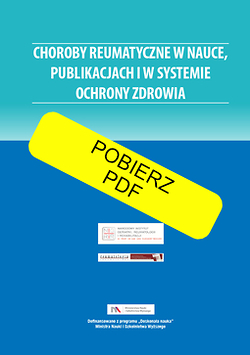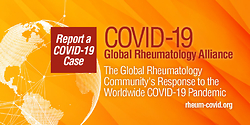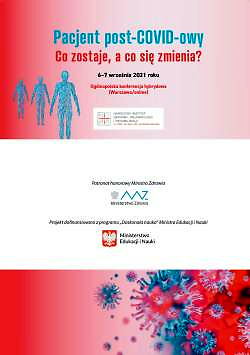|
2/2006
vol. 44
Opis przypadku
Wtórny zespól antyfosfolipidowy spowodowany nierozpoznanym zespołem nabytego niedoboru odporności. Opis przypadku
Eugeniusz Józef Kucharz
,
Ru 2006; 44, 2: 112-114
Data publikacji online: 2006/04/28
Pobierz cytowanie
Introduction
Infection with human immunodeficiency syndrome may result in a number of clinical and laboratory features of rheumatic diseases (as reviewed in [1]). The most common are bursitis, tenosynovitis, arthralgia as well as reactive or psoriatic arthritis or polymyositis. Vasculitis or lupus-like syndrome are significantly rare and it remains unclear if the symptoms are caused by virus infection or the reported cases are related to coexistence of primary autoimmune disease and human immunodeficiency virus infection. It has been shown that several clinical and laboratory features of human immunodeficiency virus infection may mimic those of systemic lupus erythematosus. They include cutaneous vasculitis, alopecia, lymphadenopathy, arthralgia or arthritis, myositis proteinuria, leucopenia, hypergammaglobulinemia. It should be also remembered that in some cases of systemic lupus erythematosus false-positive test for the virus might occur in routine laboratory diagnostic procedure. Lupus-like syndrome may associate with antiphospholipid syndrome. Antiphospholipid syndrome is a multicause syndrome which hallmarks are recurrent vascular thrombosis or pregnancy losses associated with persistently elevated levels of antibodies against antiphospholipid proteins. There are a few reports indicating for secondary antiphospholipid syndrome in patients with human immunodeficiency virus infection (for review see: [2, 3]). Antiphospholipid antibodies were detected in about half of the patients infected with human immunodeficiency virus both asymptomatic and those with clinical symptoms of acquired immunodeficiency syndrome [4]. In asymptomatic patients the antibodies may be transient [4]. There is no relationship between the antibodies and stage of the disease as well as sex, age or risk factors [2]. Thromboembolic disease has been reported in patients infected with human immunodeficiency virus and in those with clinically overt disease [5].
Case report
A 33-year-old female patient was admitted to the hospital due to fever of unknown origin, leucopenia and enhanced platelet count. The patient was transmitted to our department from the regional hospital. Before the admission to our department, she was treated with antibiotics as well as glucocorticoids (up to 48 mg of prednisone daily) and azathioprine (150 mg daily). The immunosuppressive management was applied because one-year earlier antiphospholipid syndrome has been diagnosed in the patient. The syndrome was diagnosed on the base of history of stroke of the cerebellum (two years earlier) and high titers of antiphospholipid antibodies. There was no history of pregnancy losses. Anticoagulant therapy has been introduced as part of long-lasting management of the syndrome. Despite the therapy fever was unchanged and the patient was transmitted to our department. At admission, the patient had high fever (40°C), systemic lymphadenopathy and hypertrophy of the gums. Leucopenia (2.07 G/l) with significant low percentage of lymphocytes (about 10 per cent), anemia (hemoglobin 6.5 mmol/l) and trombocytopenia (89 G/l) were found in basic laboratory results. Further laboratory findings were as following: polyclonal hypergammaglobulinemia was associated with some decrease in serum albumin level, blood culture was negative, cultures of samples taken from nose, throat or anal region contained the physiological bacterial flora only. Ultrasonographic examination of the abdominal cavity, heart and chest x-ray did not show any abnormality. Trace of protein was found in urine. Immunologic investigations showed high level of antiphospholipid antibodies of IgG isotype, antibodies against hepatitis C virus in serum, antinuclear antibodies were negative. Antibodies against hepatitis C virus as well as cryoglobulins were detected for the first time in the patient earlier. C-reactive protein level was within normal values; ESR was 45 mm/h and 83 mm/2 h. Discovery of antibodies against human immunodeficiency virus was confirmed with the Western blot method, and was the base of final diagnosis, acquired immunodeficiency syndrome with secondary antiphospholipid syndrome. Azathioprine therapy was discontinued and glucocorticoids were tempered. The patient was transmitted to the Infection Disease Ward. Despite the medication, she died within 10 days due to active acquired immunodeficiency syndrome.
Discussion
Antiphospholipid antibodies have been detected in patients with viral infections, and recently infections have been implicated in the pathogenesis of catastrophic antiphospholipid syndrome [4]. The clinical picture of the syndrome in human immunodeficiency virus-infected patients seems to be akin to that of hepatitis C-virus infection, also a number of human immunodeficiency virus-positive patients had also hepatitis C-virus infection. According to Ramos-Casals et al. [3] avascular bone and cutaneous necrosis are the most common clinical features of the antiphospholipid syndrome in patients infected with human immunodeficiency virus. Other phenomena were also reported. They include deep venous thrombosis, pulmonary embolism, retinal vein thrombosis or neurological manifestations [6]. Most of these observations is based on reports of single cases, and variety of factors might effect the state of the patients. The coexistence of antiphospholipid syndrome with acquired immunodeficiency syndrome however relatively uncommon has been reported (reviewed in [1-3]). The present case was described in order to indicate coexistence and to suggest the need of evaluation of all cases of fever of unknown origin for human immunodeficiency virus infection. In the described above case, fever was suspected to be of infectious origin, and the patient was receiving immunosuppressive therapy that is contraindicated in patients with virus-induced immunodeficiency. In fact, it had been surprising that the patient had no signs of sepsis despite significant immune deficiency. It is also of interest that the first signs and symptoms were associated with stroke of the cerebellum. This event was probably resulted from outbreak of the secondary antiphospholipid syndrome. The antiphospholipid syndrome is a rare rheumatic manifestation of human immunodeficiency virus infection but should be considered as an unusual presentation of acquired immunodeficiency syndrome especially in patients with high fever resistant to antibiotics and without confirmation of bacterial or fungal infection.
References
1. Reveille JD. The changing spectrum of rheumatic disease in human immunodeficiency virus infection. Semin Arthritis Rheum 2000; 30: 147-66. 2. Asherson RA, Cerviera R. Antiphospholipid antibodies and infections. Ann Rheum Dis 2003; 62: 388-93. 3. Ramos-Casals M, Cervera R, Lagrutta M, et al. Clinical features related to antiphospholipid syndrome in patients with chronic viral infections (hepatitis C/HIV infection): description of 82 cases. HIV/AIDS 2004; 38: 1009-16. 4. Bloom EJ, Abrams DI, Rodgers G. Lupus anticoagulant in the acquired immunodeficiency syndrome. JAMA 1986; 258: 491-3. 5. Asherson RA, Shoenfeld Y. Human immunodeficiency virus infection, antiphospholipid antibodies and the antiphospholipid syndrome. J Rheumatol 2003; 30: 214-9. 6. Shahnaz S, Parikh G, Opran A. Antiphospholipid antibody syndrome manifesting as a deep venous thrombosis and pulmonary embolism in patient with HIV. Am J Med Sci 2004; 327: 231-2.
Copyright: © 2006 Narodowy Instytut Geriatrii, Reumatologii i Rehabilitacji w Warszawie. This is an Open Access article distributed under the terms of the Creative Commons Attribution-NonCommercial-ShareAlike 4.0 International (CC BY-NC-SA 4.0) License (http://creativecommons.org/licenses/by-nc-sa/4.0/), allowing third parties to copy and redistribute the material in any medium or format and to remix, transform, and build upon the material, provided the original work is properly cited and states its license.
|
|

 ENGLISH
ENGLISH












